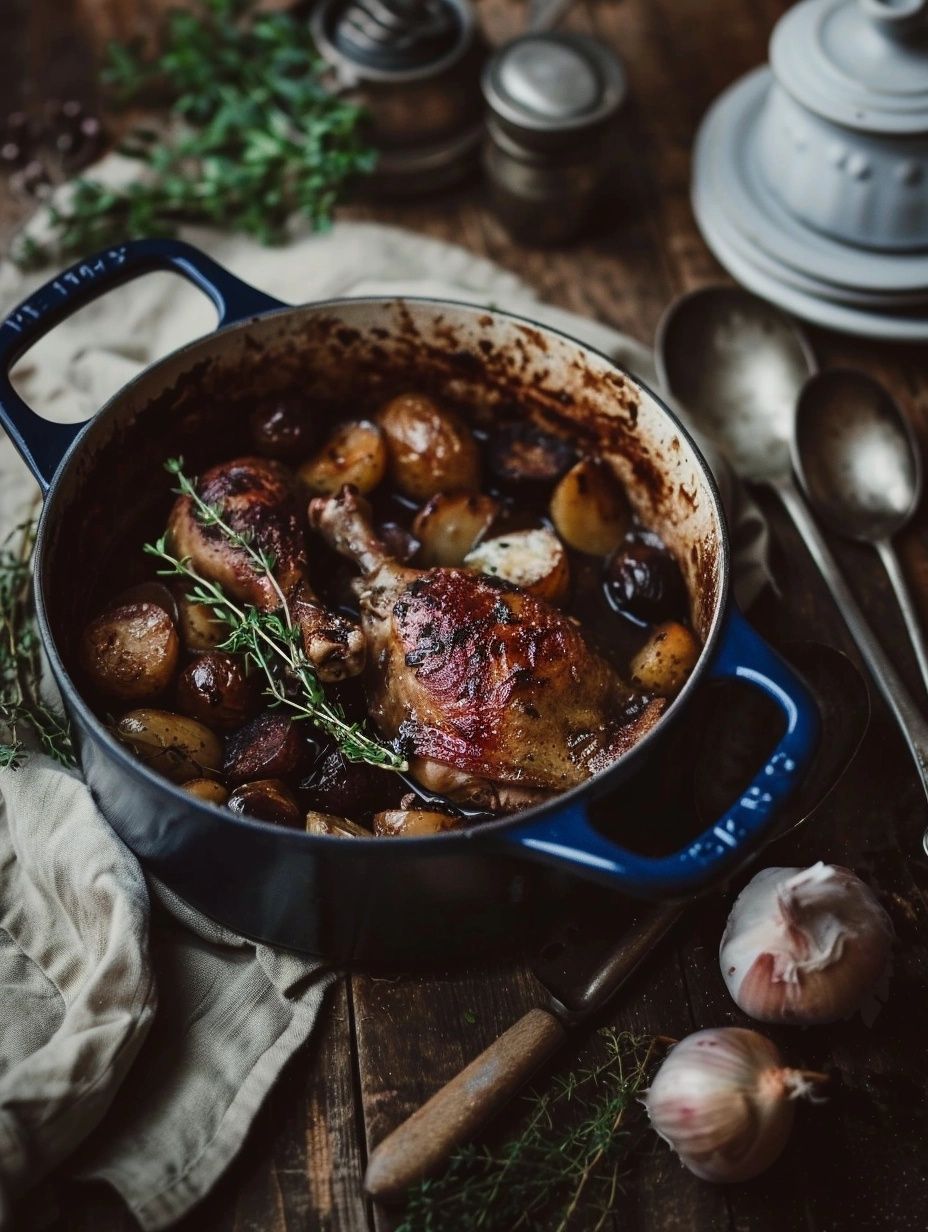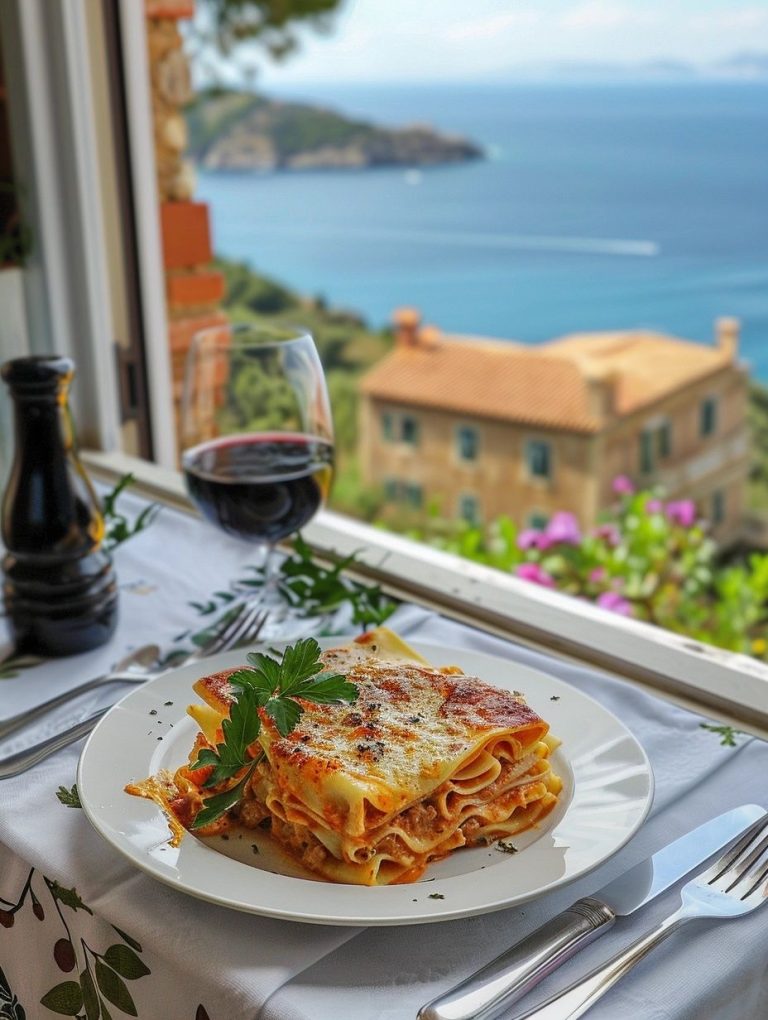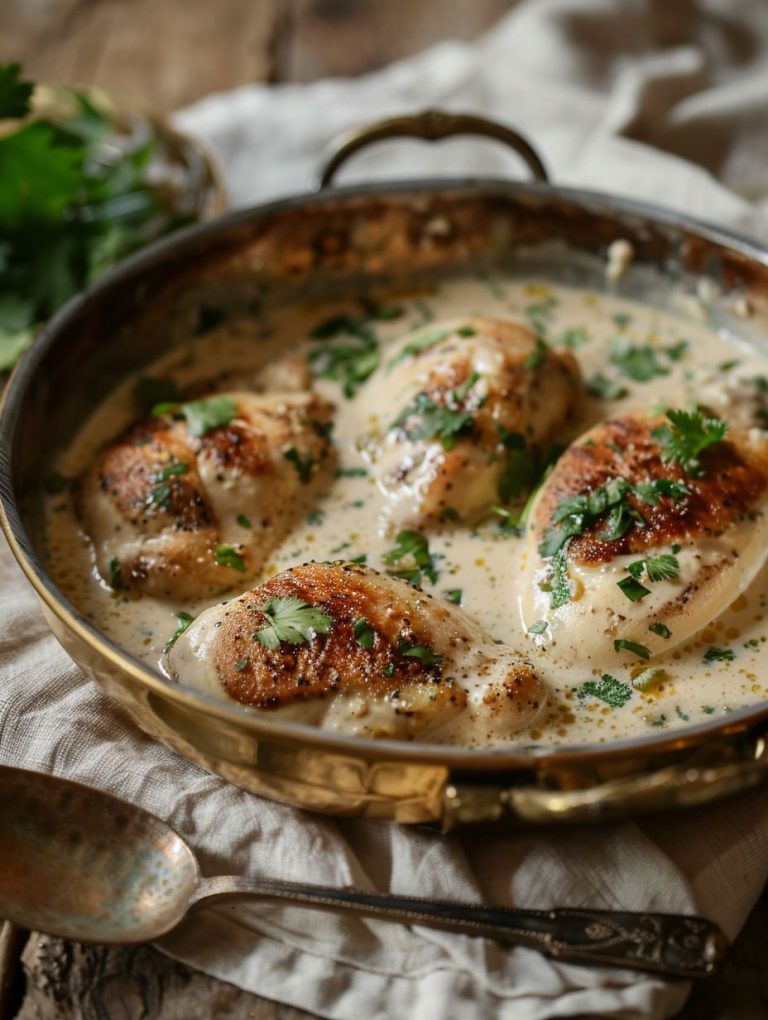How to Make Coq au Vin (Classic Recipe)
We may earn a commission through all links on this website. As an Amazon Associate, we earn from qualifying purchases.Making traditional French Coq au Vin at home may seem like a large project to take on, however, there is not much active work involved. The deep flavors come from an overnight marinade, and lengthy cooking time on low heat.
Here is the traditional French Coq au Vin recipe, which serves 4 people.

Ingredients
- 1 whole chicken, cut into pieces
- 1 bottle of red wine: the best type of red wine to use is a hearty red wines, typically a Burgundy from the Bourgogne region.
- 7 oz of bacon, cut into ½ in pieces
- 2 carrots
- 1 onion
- 1 bunch of spring onions, or pearl onions
- 2 cloves of garlic
- 1 ¾ cup chicken stock
- 3 ½ tablespoons of cognac
- 4 sprigs of thyme
- 1 tablespoon all-purpose flour
- 2 tablespoons of butter
- 2 tablespoons of oil
- Salt and pepper to taste
Steps to Make Coq au Vin
- Peel and slice your carrots into rounds, and peel and dice half of your onions. In a large bowl, place the pieces of chicken, carrots, onion, thyme and cover with your red wine. Let chill for 12 hours.
- The next day, strain, reserve the wine marinade, and set aside the chicken pieces and carrots.
- In a saucepan, melt your butter together with your oil. Once hot, brown the pieces of chicken and salt. Remove the chicken and set aside, then add in new diced onion, the reserved carrots, and flour. Mix for 5 minutes, then add your chicken back in, and your crushed garlic. Add in the cognac and flambé.
- Add in the reserved wine marinade and the chicken stock. Let cook on low heat for 1 hour and 45 minutes.
- Cook your bacon, then add to the pot, then allow to cook for 30 more minutes. Add salt and pepper to taste.

History
Coq au Vin is a classic French dish that has its roots in rural France. The exact origins of the dish are somewhat unclear, but it is believed to have originated in the Burgundy region.
Coq au Vin became popular in the 20th century, gaining international recognition as a quintessential French dish.
While its historical details may not be precisely documented, the dish’s enduring popularity has made it a symbol of French culinary tradition, with variations and adaptations enjoyed worldwide.







A lot of steps. Flavor wonderful but free range 4 lbs hen cut into 10 pieces seriously over cooked following the recipe. An old ornery cock probably would work for this amount of cooking
Is there a way to avoid doing the marinade for 12hrs?